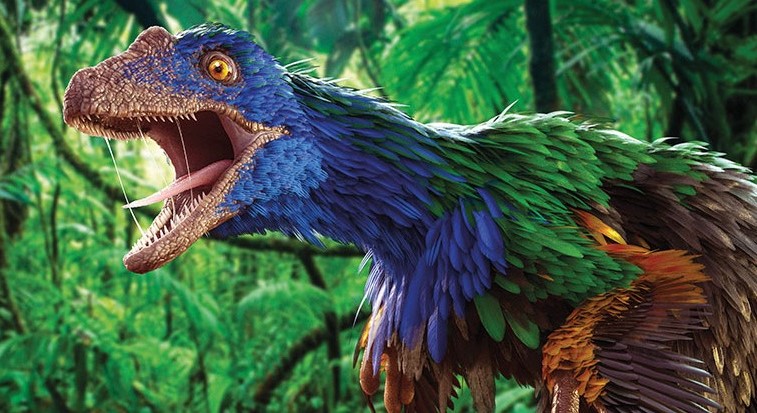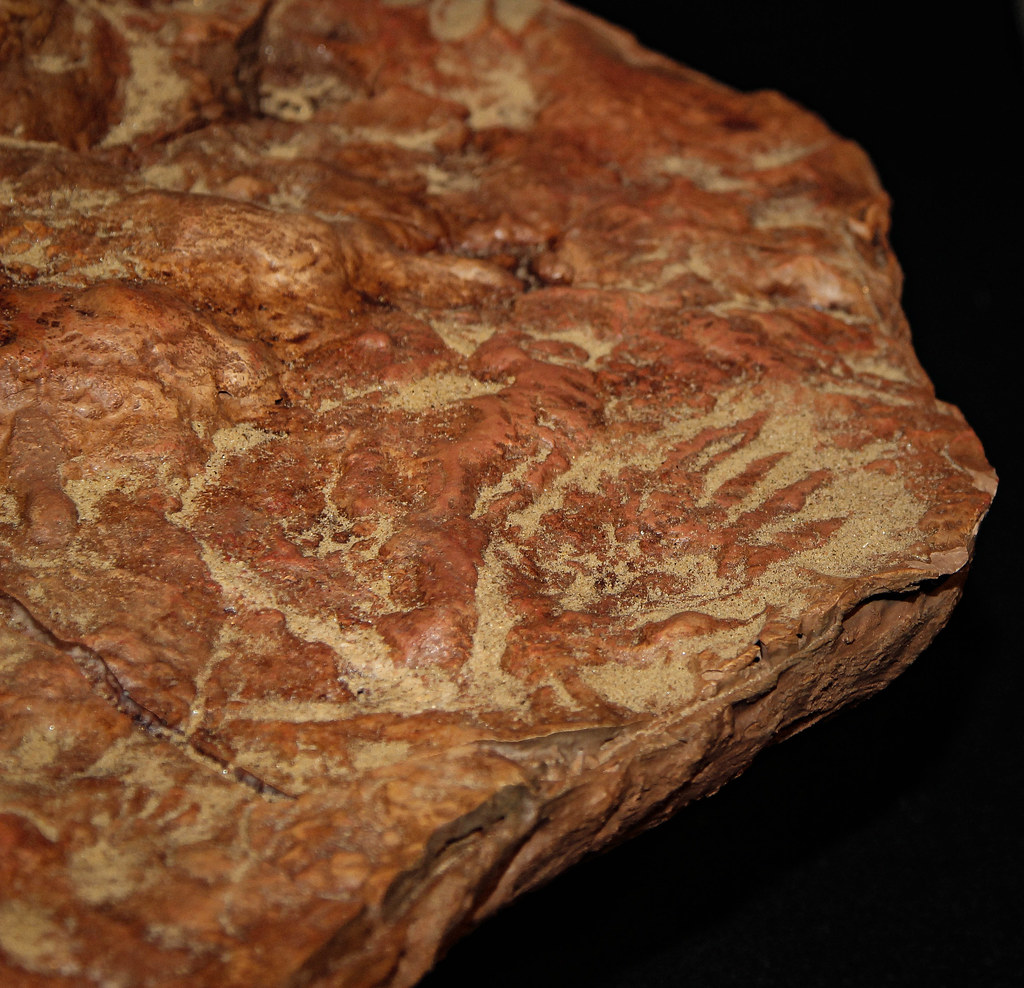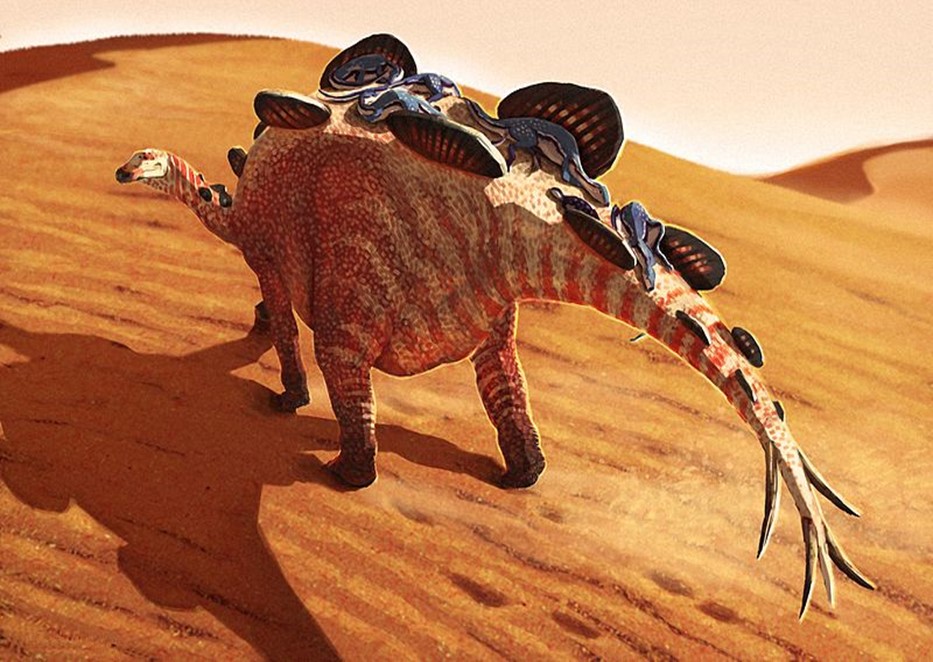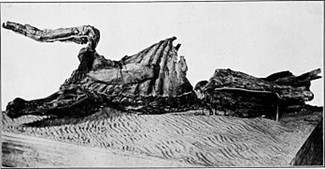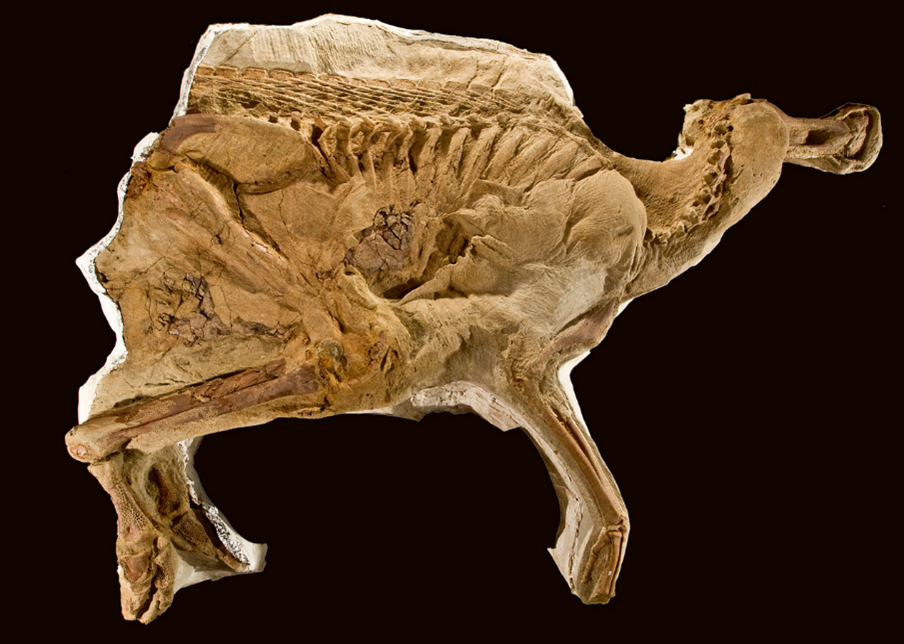Not very long ago paleontologists were sure of at least one thing about dinosaurs: nobody would ever know what color they were – unless somebody invented a time machine. Artists had to make up the colors because there were only bones to work with. And you can’t tell the color of anything’s skin from looking at its bones. Even the discovery of several dinosaur “mummies” didn’t help [See my post on dino mummies here]. Though some of these had preserved dinosaur skin, the skin had taken on the color of the minerals that seeped into it to fossilize it. But modern technology has changed this. There are now a couple of ways to determine what color certain dinosaurs were.

The first is a rare case. In 2011 an armored dinosaur called Borealopelta (BOH-ree-AH-low-PEL-tuh) was discovered. Its skin was so well preserved that scientists were able to use a mass spectrometer to discover its color. How does that work? A mass spectrometer is able to tell the chemical substances something is made of, and when you know the exact chemical substances, and where they are, you know what color it is. In the case of Borealopelta, scientists determined the dinosaur was dark reddish brown on the back and neck and lighter reddish brown on the belly and lower parts.
But finding such well-preserved skin is rare. However, scientists have found another way to determine color. Using an electron microscope they found tiny structures that were smaller than cells. At first these were dismissed as bacteria, but they were, in fact, melanosomes (muh-LAN-uh-sohmz), irregular blobs that contain color pigments. Melanosomes can be found in skin, hair, scales or feathers. The size, shape, thickness, and dispersal of melanosomes found in a fossilized feather can be compared to those found in modern birds to determine a color. Then the trick is finding dinosaur fossils that contain preserved skin, hair, scales, or feathers. So far, feathers have been the main structure to reveal dinosaur color through melanosomes.

In 2009 scientists found a feathered dinosaur, which they named Anchiornis (ANG-kee-OR-niss). It lived during the late Jurassic Period. The fossil included some preserved feathers, which were examined under an electron microscope. Analysis of the melanosomes indicated this was a black-and-white dinosaur with a patch of red on the back of its head.
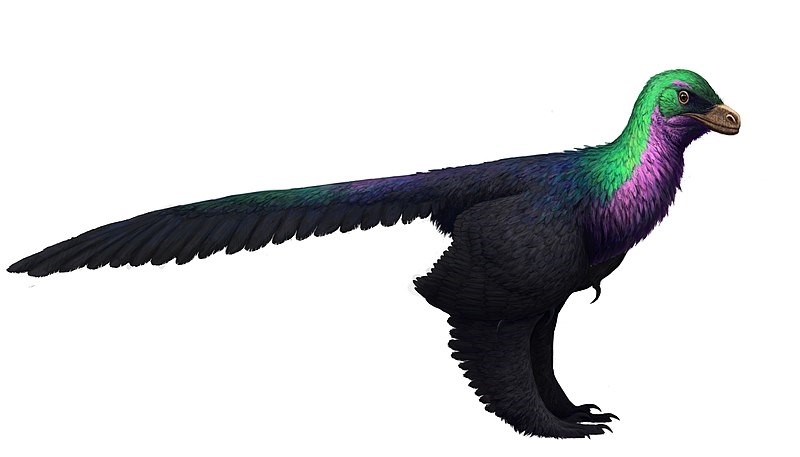
Other dinosaurs have been colorized by this same process. A recent discovery in China, Caihong (KAY-hong), was found with remains of actual feathers. When these were analyzed, they showed that most of the dinosaur was iridescent black, a glossy black that subtly changed its hue when looked at from different angles. The head, chest, and the base of the tail contained melanosomes that produce bright iridescent colors in modern birds. These colors could not be specifically identified, but artists have guessed at what they might be.
Other dinosaurs that have been colorized include Sinosauropteryx (SIEN-oh-soh-ROP-tuh-riks) – which lived during the early Cretaceous Period and had bright orangish feathers with a lighter belly and a striped tail.

And they include Microraptor – a small meat-eating dinosaur that also lived during the early Cretaceous Period and had feathers that gleamed an iridescent blue/black, like ravens or starlings.
As stated earlier, melanosomes can also be found in scales. Psittacosaurus (SIT-a-ko-SOR-us) is an early Cretaceous dinosaur distantly related to Triceratops. It does not have feathers, but one of the skeletons found had preserved scales that contained melanosomes. They revealed the dinosaur was dark brown on its back and a paler brown on its underside with its hind legs being striped on the inside and spotted on the outside.
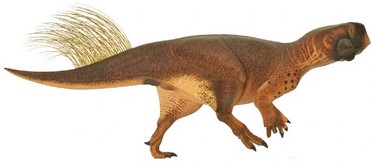
Melanosomes are not the answer to the color of every dinosaur. There has to be preserved soft tissue to have melanosomes, and most fossils lack that. Additionally, some colors, such as blues and yellows, are not made by melanosomes. Still, even knowing the colors of a few dinosaurs is something most scientists once thought would never happen.
What color do you think Tyrannosaurus rex was? Put your guesses in the comment section.
Sources (Click Me)
Black, Riley. “The Colors of Dinosaurs Open a Window to Study the Past.” Smithsonian Magazine. 21 May 2019. https://www.smithsonianmag.com/science-nature/colors-dinosaurs-open-new-window-study-past-180972070/
—. “Microraptor was a Glossy Dinosaur.” Smithsonian Magazine. 9 March 2012. https://www.smithsonianmag.com/science-nature/microraptor-was-a-glossy-dinosaur-119691559/
“Caihung.” Wikipedia. 18 May 2021. https://en.wikipedia.org/wiki/Caihong
“Dinosaurs – Sinosauropteryx prima.” Australian Museum. 12 Feb. 2020. https://australian.museum/learn/dinosaurs/fact-sheets/sinosauropteryx-prima/
Dunham, Will. “Scientists decipher color of ‘super cute’ bristly dinosaur.” Reuters. 2021. https://www.reuters.com/article/us-science-dinosaur/scientists-decipher-color-of-super-cute-bristly-dinosaur-idUSKCN11L1OI
“Spectacularly Detailed Armored Dinosaur ‘Mummy’ Makes Its Debut.” Smart News. Smithsonian Magazine. 2021. https://www.smithsonianmag.com/smart-news/mummified-armored-dinosaur-makes-its-debut-1-180963311/
Woodford, Chris. “Mass Spectrometers.” Explain That Stuff! 4 Feb., 2021. https://www.explainthatstuff.com/how-mass-spectrometers-work.html
Yong, Ed. “The Renaissance of Technicolour Dinosaurs Continues (And the Gloves Come Off). Not Exactly Rocket Science. National Geographic.com. 4 Feb. 2010. https://www.nationalgeographic.com/science/article/the-renaissance-of-technicolour-dinosaurs-continues-and-the-gloves-come-off
Note: Title Image Sourced from BBC Science Focus Magazine
